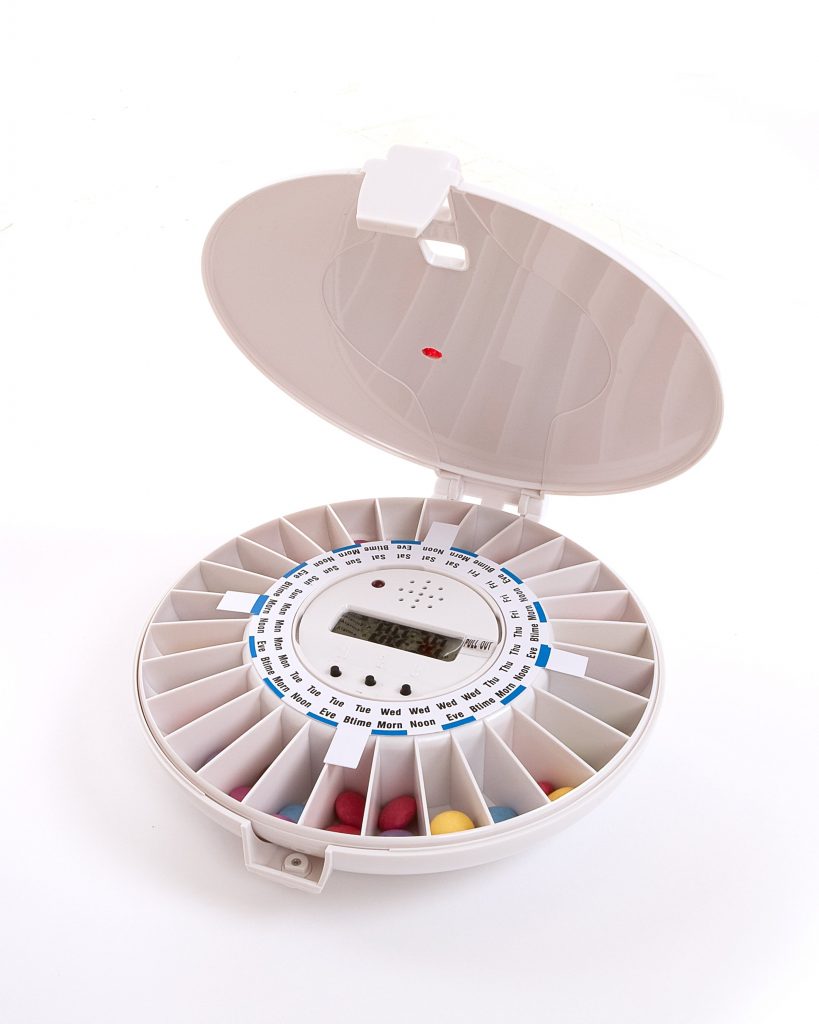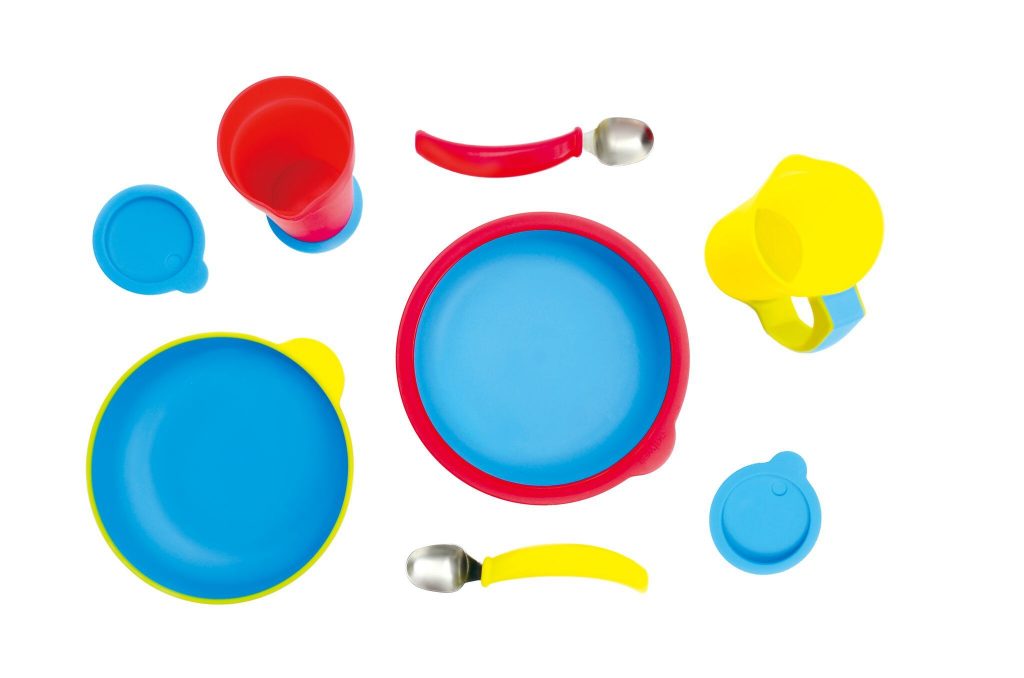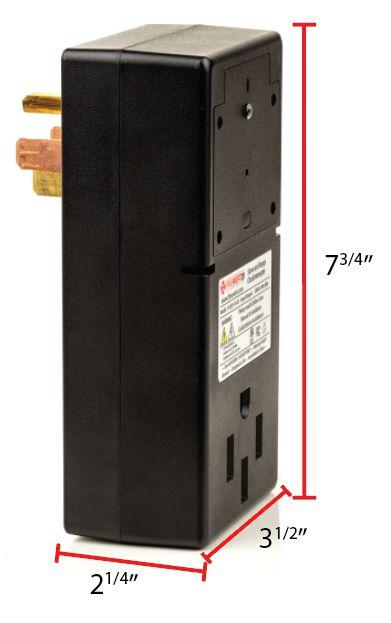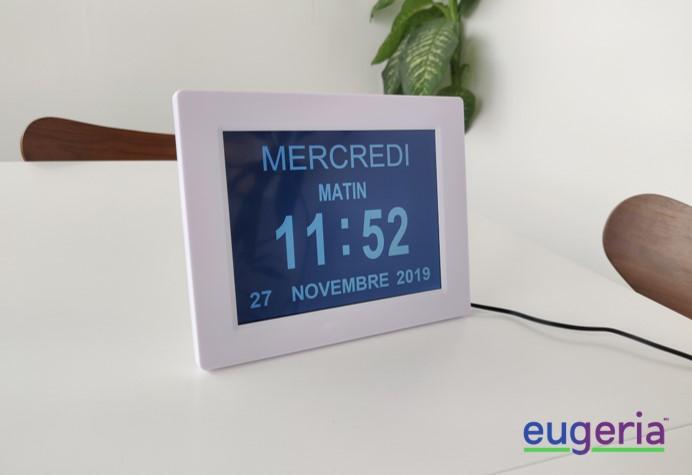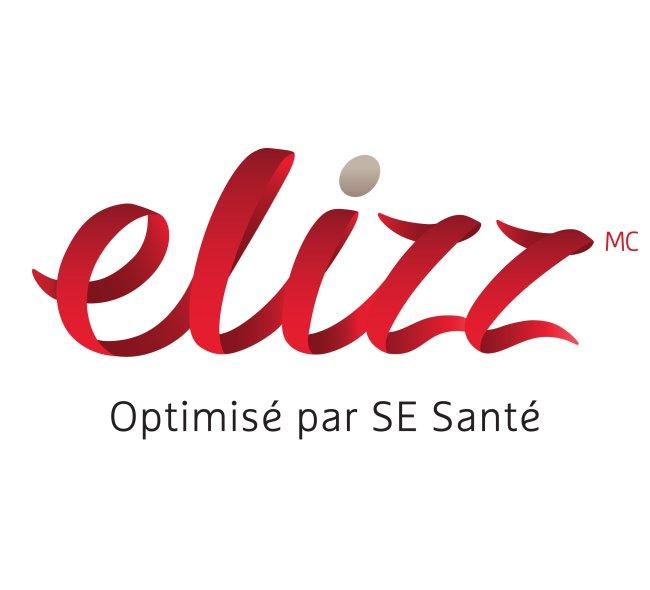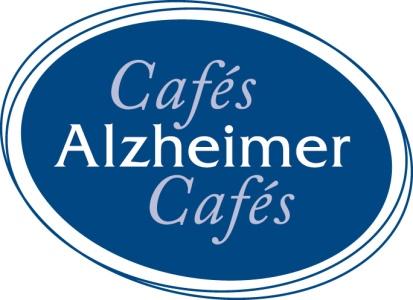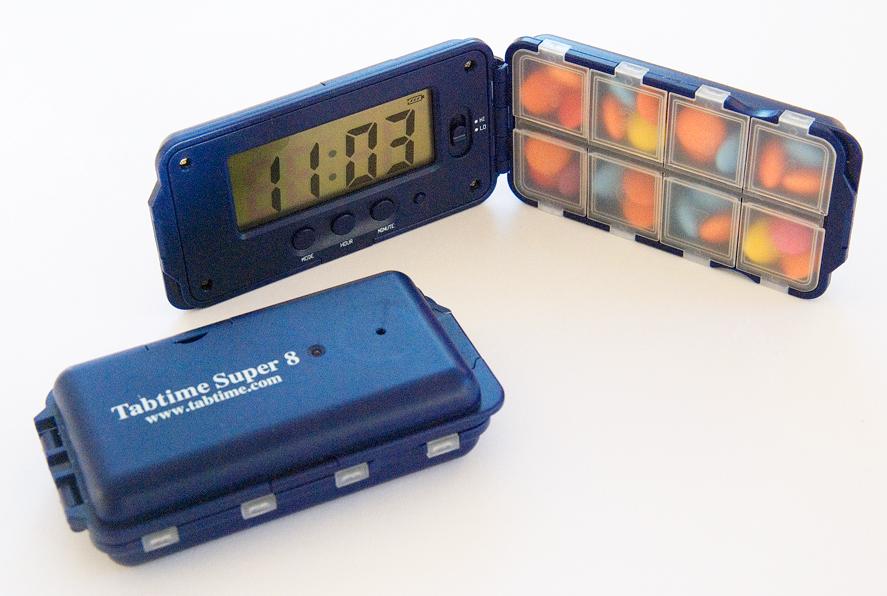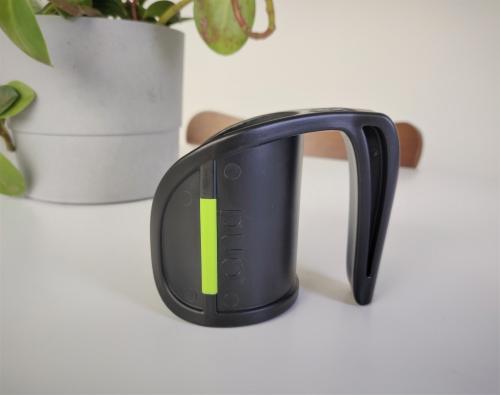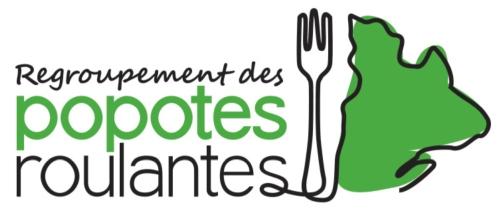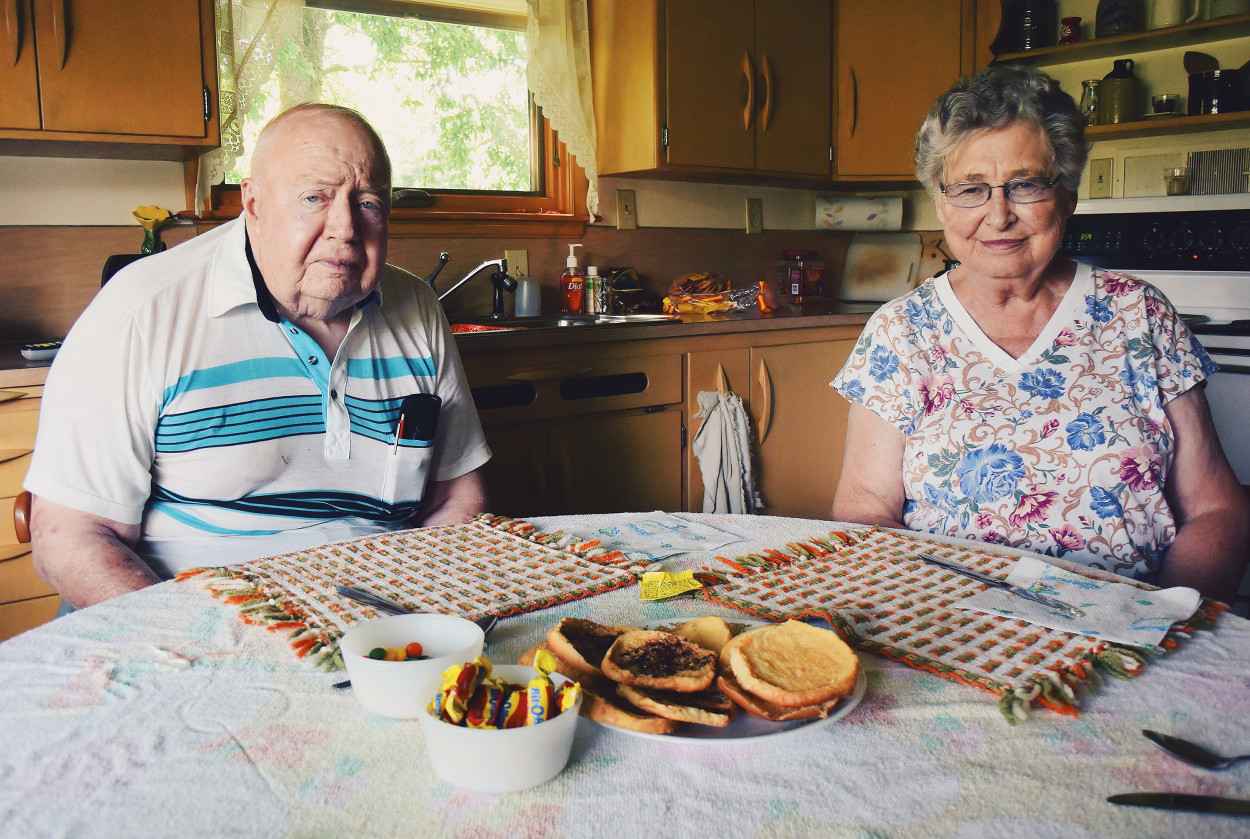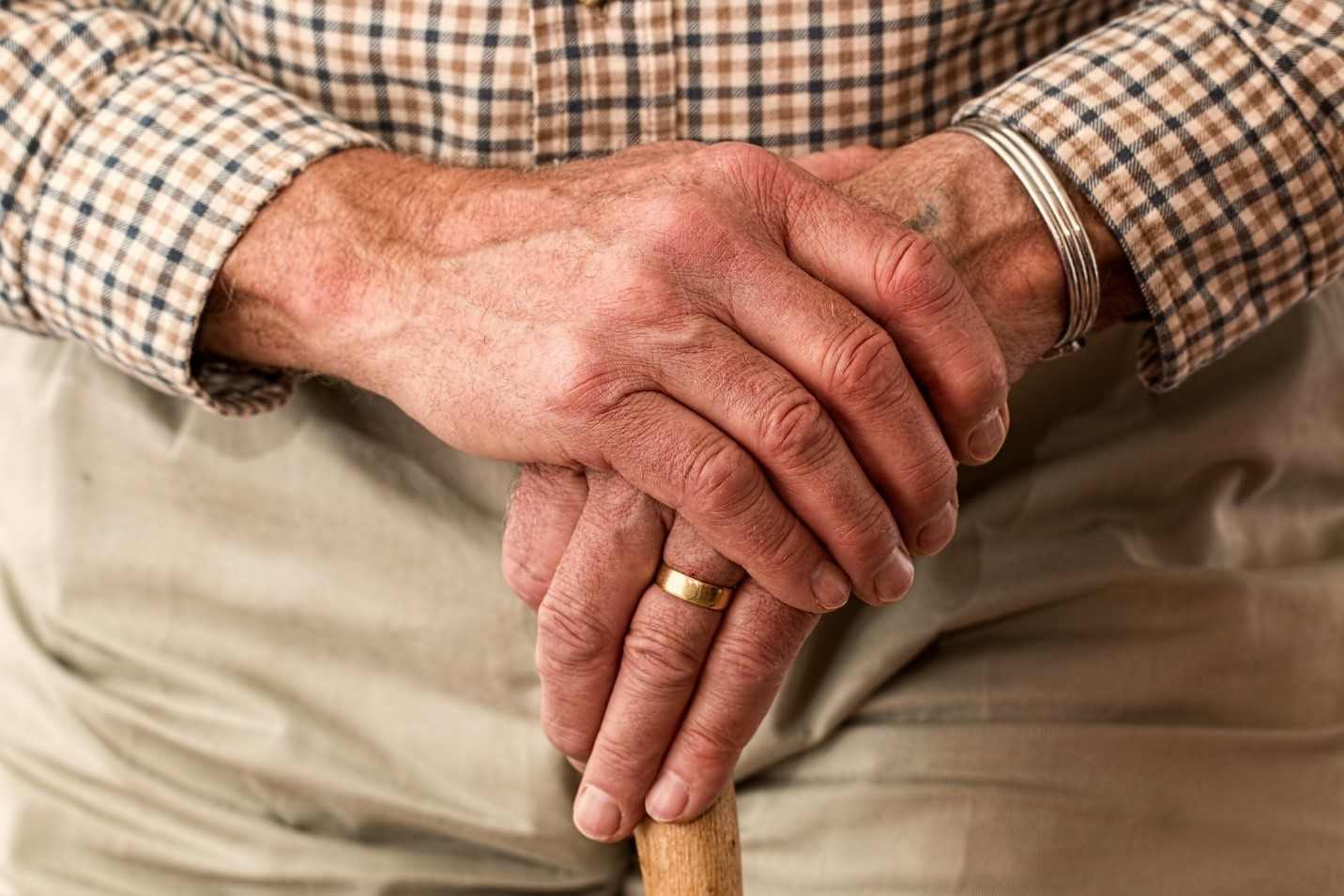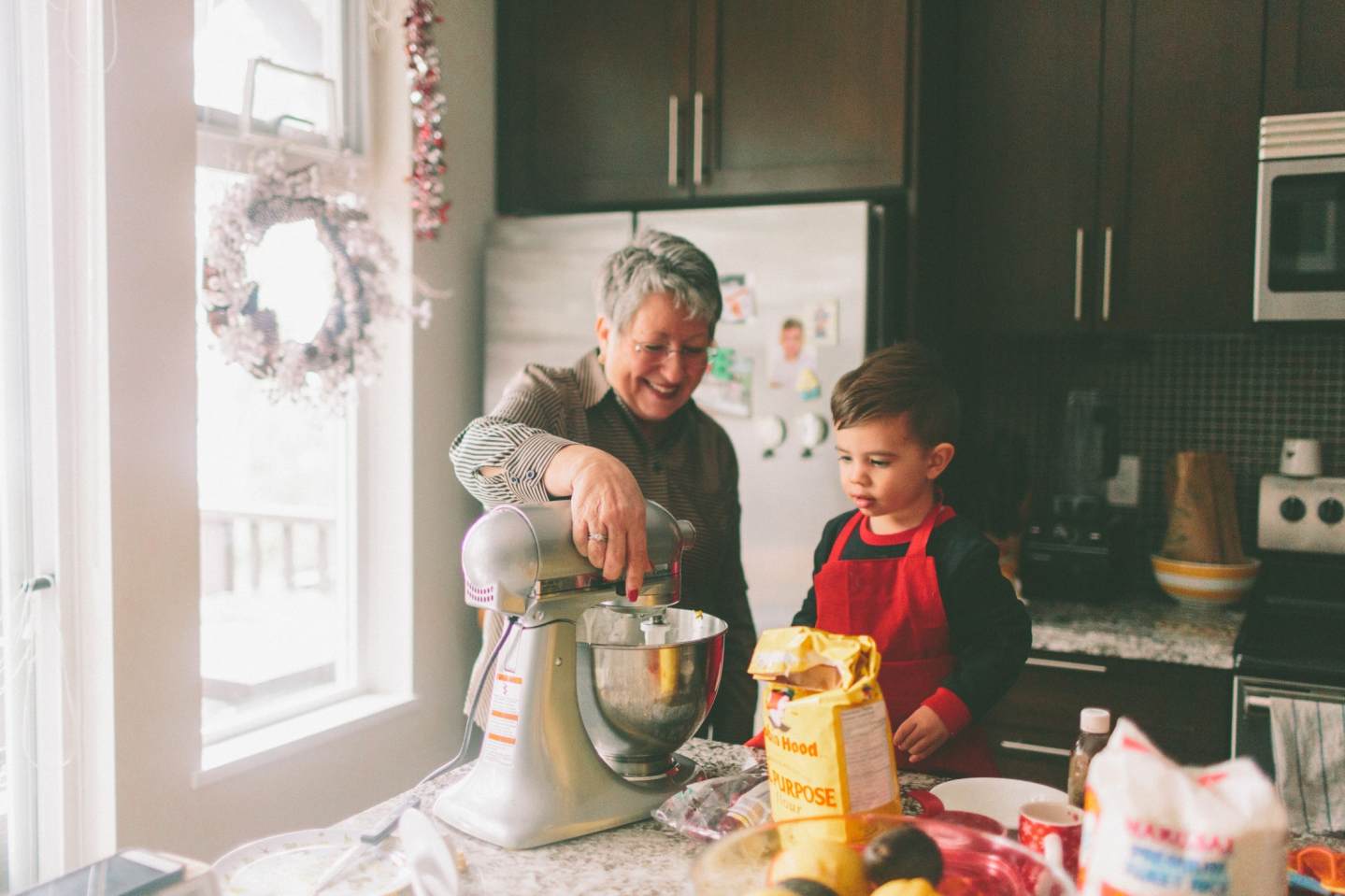
What Are iADLs and How Are They Different from ADLs?
This article is part of a series on daily activities and caregiver support.
You’ll find other articles on this topic on Eugeria.ca:
- Have you heard of ADLs?
- What is adult day care?
- 8 benefits of respite and why you should get it now!
Have you ever thought about all that is required to complete your day-to-day tasks so that you can remain fully independent? Most of us don’t, until we are forced to because of illness or injury, or because a love one has started having difficulty completing them.
When that happens, it doesn’t mean that we can’t live safely and independently at home and need to move out. But it may mean that some help is required.
But help for what exactly? To determine a person’s specific needs for assistance, healthcare professionals will often use what they call ADLs and iADLs. ADLs (Activities of Daily Living) and iADLs (Instrumental Activities of Daily Living) refer together to the complete list of self-care activities required for maintaining full independence. Assessing them is the bread and butter of social workers and occupational therapists when working with older adults.
Knowing the full list of ADLs and iADLs will certainly not replace a professional assessment. But it will empower you to look out for areas where you or your loved one might need help.
What’s the Difference Between ADLs and iADLs?
Speaking of bread and butter, Activities of Daily Living (ADLs) are all the basic personal care actions related to self-hygiene and health (like eating, bathing, dressing, etc.). Instrumental ADLs are the more complex activities that allow (are instrumental for) a person to live independently in their community.
So What Are the iADLs?
Instrumental ADLs take place both in and out of the home. They are:
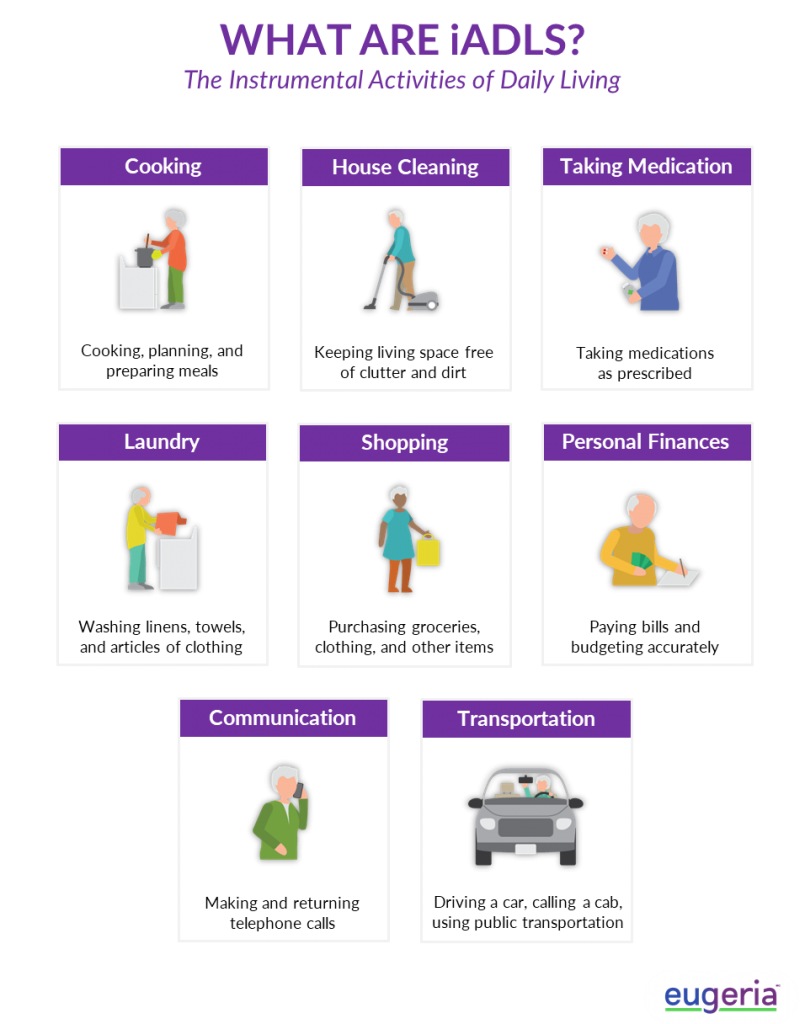
Is It Common for Older Adults to Need Assistance with iADLs Before ADLs?
Yes, people typically need assistance for iADLs before ADLs. For example, many people will lose the ability to prepare food, but can still feed themselves, or they may be able to dress themselves, but no longer can get down the stairs to do laundry.
As a Caregiver, How Can I Use iADLs and ADLs?
When you notice that someone you love is no longer able to independently take care of himself or herself, use the list of iADLs and ADLs as a checklist for monitoring and planning care. As you arrange caregiving or other forms of support, this will ensure that you do not forget anything and that all needs are covered. Also, making notes of what activities require aid will help when communicating your concerns to a healthcare professional.
What Are Some Ways Healthcare Professionals Use ADLs and iADLs?
Social workers use ADLs and iADLs in assessing functional status to determine home care requirements or moving needs. Because they are an excellent measure of independence, iADLs and ADLs may be used by physicians to assess memory loss and its evolution when present. Most importantly, occupational therapists are healthcare professionals who are specialized in assessing and improving ADLs and iADLs.
Visit the Eugeria Products and Services marketplace to find items and services helping older adults with their iADLs and ADLs


